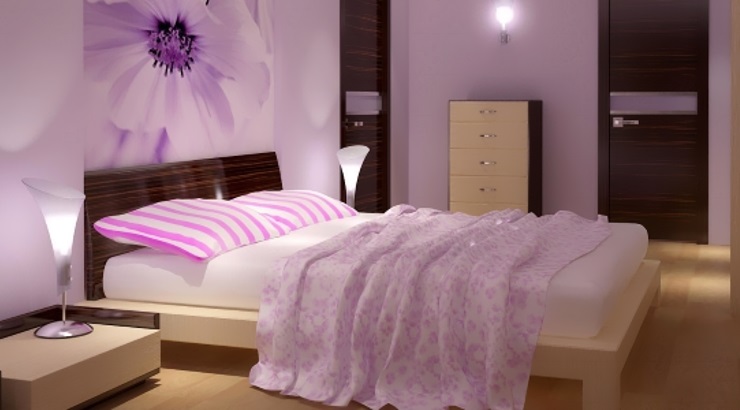Interior Design
How to Light Your Bedroom: Tips and Techniques
Five practical tips to get the right lighting for your bedroom.

As living spaces continue to decrease in size due to the rapid growth of the population mainly in urban areas, bedrooms have assumed many functions depending on need and time of day including sleeping, dressing, working and relaxing.
Bedrooms therefore require adequate and appropriate lighting to set the mood and tone for these activities.
Though getting the right lighting for your bedroom can be a puzzling task, below are five important tips to steer you on the accurate course.
1.) Function
The secret to a well-lit bedroom lies in layering different types of lights. There is the general lighting which illuminates the entire room and is centrally placed overhead lighting.
It is however not sufficient to create the need for task lighting which is focused on activities that need more lighting such as writing, reading dressing and applying make-up among others.
Accent lights are equally necessary for highlighting areas you wish to draw extra attention to such as artwork.
You should complement your overhead lighting with wall scones, table lamps, pendants and floor lamps depending on the activities you will be carrying out in the room to create the perfect ambiance.
2.) Style
Lighting fixtures are a great way of adding a personal touch and style to your bedroom.
When choosing lighting fixtures, ensure that they complement the style of your bedroom or contrast it in a good way. You can use fixtures such as wall scones, table lamps and floor lamps to create balance and symmetry in the room.
RELATED: Small Bedroom Design Ideas to Elevate Your Space
Consider the colour scheme in your bedroom since it will be affected by the intensity of the light in the room. Rooms with a dark colour scheme require more light while those with a bright colour scheme need less light.
From stylish pendants to chandeliers to ceiling fans, you are spoilt for choice on the type of fixtures to incorporate in your bedroom for the ultimate/optimum look.
3.) Size
Proportion is critical to an aesthetically pleasing living space. Deciding where the fixtures and lamps will be placed is crucial in determining their appropriate sizes.
Choose pieces that have scale and presence so that they can properly fill the space they occupy. The size of the lamp base, shade or swing arm length depends on the available space.
The ideal bedside lamp should be mounted just above your shoulder height in your reading position so that it can cast light on any reading material held in bed without causing glare to the eyes.
If limited by space, pendant lights would be a great option since they don’t occupy space on the squeezed bedside stand, desk or floor.
4.) Convenience
Comfort is of utmost importance in the bedroom whose primary function is a relaxation and resting haven.
To avoid having to get out of bed to switch off the lights and navigate the dark going back, switches should be installed beside the bed within easy reach.
Invest in dimmer switches to give you the flexibility to alter the light so that it suits varying moods and activities.
RELATED: 15 Stylish Wall Décor Ideas to Transform Your Living Room
If it is not possible to have all the switches at the bedside, you can have lighting professionals install infrared remote-controlled devices for turning off the lights.
You can also add a blackout lining or blinds to block light from outside making the room dark enough for adequate sleep.
5.) Age
The needs of each family member differ depending on their age and lifestyle. The type of lighting used in an adult’s bedroom cannot be suitable for a child’s bedroom or an elderly person’s room.
The material used for the light fixtures such as the lamp shade should be considered. While a glass shade would be perfect for your bedroom, it could be easily knocked over in a child’s room during play.
An aging eye has a more opaque cornea and decreased retinal illuminance which means they require brighter lights to be able to see clearly.
You should also avoid having loose cables lying around the room since they could easily trip a child or an elderly person.
For kids who are afraid of the dark, night lights can be used to ensure comfort during sleep.














